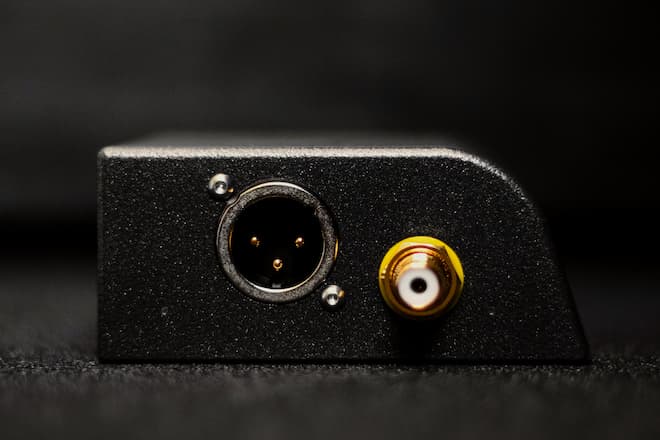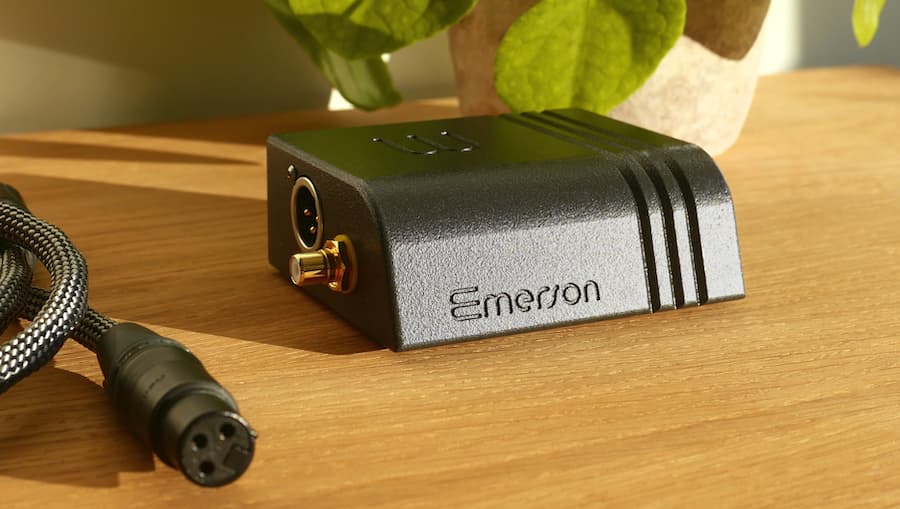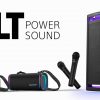Digital audio network streamers are one of the fastest growing categories in consumer audio and while the vast majority of listeners are perfectly content with using their laptops, tablets, and smartphones, the reality is that there isn’t one perfect platform that can work flawlessly with every format or streaming service. Products like the Wattson Audio Emerson DIGITAL streamer are another viable option in this category trying to address these issues.
That dilemma also applies to high-end network streamers as well. A high price does not guarantee support for every streaming service, or support for AirPlay 2, Tidal Connect, Chromecast, Bluetooth aptX, aptX HD or aptX Lossless.
Firmware updates do not guarantee that everything mentioned in the latest press release will come to pass right away. We’re huge fans of the Cambridge Audio CXN V2 network player but a recent update to support Tidal Connect did not happen without some hiccups.
Having listened to a few very expensive streamers from Naim, AURALiC, Cambridge Audio, and Innuos in both audio stores and at various shows, I can recall that they were all very impressive sonically, but that my positive reaction was tempered by the realization that all of them would require a rather sizable financial investment.
It has been far too long to remember how they compared to one another (and rather impossible considering I did not listen to any of them in the same system), but I do know that I would rather put my money into a higher quality DAC vs streamer in 2020. Far less risk and a DAC doesn’t have to worry about compatibility with streaming platforms and wonky apps.
Whether or not you need to spend more than $2,000 on a network streamer is for your ears to decide but my listening and user experience so far with almost a dozen units suggests that there is no such thing as a perfect network player and that apps need to get a lot better before the mainstream takes a hard look.
If brands can’t offer Sonos S2 simplicity while delivering hi-res digital audio streaming — it’s going to be a bumpy ride.
Wattson Audio Emerson DIGITAL Streamer

$1,500 is a lot of money for a network streamer; especially one that only offers S/PDIF and AES/EBU digital outputs.
Wattson Audio are not alone in this practice; Sonore only offers a single USB output on the ultraRendu ($957 with external power supply) and the Roon Nucleus I just reviewed only comes with a single USB output as well for $1,459.00.
But is that a mistake?
I think so for the simple reason that limiting the number of components that potential customers can plug the Emerson DIGITAL streamer cuts into its value.
Why limit the number of DACs or DAC/Headphone amplifiers that a network streamer can be connected to?
Not offering USB and Optical Toslink is a mistake when you’re trying to broaden the appeal of your product to a wider range of customers.

The Wattson Audio Emerson DIGITAL is a 24-bit/192kHz DAC; audiophiles who turn up their noses at the lack of support for DSD or 32-bit/384kHz are kidding themselves. DSD is irrelevant outside of the audiophile world and there is nothing at 32-bit/384kHz on any streaming service.
Tidal or Qobuz users will be just fine with the Emerson DIGITAL although it does not support MQA yet.
Wattson Audio strongly recommends the use of its iOS Wattson Music application. It has been optimized for the Emerson and offers the user to access both its features and access to streaming services.
However, the Emerson DIGITAL does respond to the UPnP AV /DLNA protocol and may be piloted by numerous applications compatible with this norm. They recommend Audirvana for macOS and Windows, BubbleUPnP and mConnect Player for the Android devices.
The Emerson DIGITAL is Roon-Ready but you need to update to the latest firmware to make it compatible. I conducted two firmware updates during my time with the unit and it took only a few minutes to download and configure. No issues there at all.

Set-Up
The Wattson Audio Emerson DIGITAL spent time connected to the Schiit Audio Bifrost 2 and Cambridge Audio DacMagic 200M DACs, and the Audiolab 6000A and Rotel Michi X3 Integrated Amplifiers.
Both DACs spent time connected to the Cambridge Audio AXA35, Croft Acoustics Phono Integrated Amplifier, and the NAD C 316BEE V2.
Loudspeakers included the Magnepan LRS, Q Acoustics 3030i, Polk Audio L100, Wharfedale Diamond 12.1’s, and PSB Alpha P5’s.
The Emerson DIGITAL was connected to all sources with the Analysis Plus Black Digital Cable, AudioQuest Carbon Coaxial Digital Cable, and Cardas Clear Digital Coaxial Cable.
Sound
The Emerson DIGITAL betrayed its Swiss origins almost immediately; utter neutrality with excellent detail retrieval. Like a clear day in the Alps with wonderfully crisp clean air; although my relatives who live outside of Geneva tell me a different story.
The Audiolab 6000A is a very neutral sounding amplifier with a DAC that runs straight down the middle; the Emerson DIGITAL proved that to be the case with warmer sounding loudspeakers like the Q Acoustics 3030i and Wharfedale 12.1’s.
I enjoy torturing audio components with Donald Byrd’s “Cristo Redentor” which tells me a lot about their top end extension, detail, and ability to make his trumpet come alive.
Top end extension and detail were excellent, but the slight lack of texture was a byproduct of the Emerson’s neutrality and cooler tonal balance of the Audiolab amplifier.
I’m a meat on the bones kind of person. Throw all the detail and transparency in the world at me and I’ll take a bite — but don’t expect me to stick around for the main course.
The Emerson/Audiolab combination can certainly work but your loudspeakers better lean really warm and rolled-off on top.
I had better results with the Emerson connected to the Rotel Michi X3 and the DACs with the warmer sounding speakers at home.
Transparency was excellent; but I do wish that the Emerson was slightly fatter sounding on its own without the DACs; both the Schiit and Cambridge DacMagic 200M did a lot to make the Emerson sound more fleshed out with vocals and push the sound slightly forward.
Bass is taut and very quick sounding. Electronic music from Aphex Twin, Tangerine Dream, and Boards of Canada benefitted from the Emerson’s ability to keep everything quite firm and organized.
The one constant was that the Emerson DIGITAL could keep everything very neat and tidy with excellent transparency. If you want to hear everything carved neatly in space — this is definitely the streamer for you.
The neutrality of the presentation makes the Emerson DIGITAL a useful tool for audiophiles looking to experiment with different DACs.
Competiton

The $549 Bluesound NODE (review coming next week) might not seem like a natural competitor but it’s too good to ignore in this scenario. It offers USB as an output option (which has yet to be enabled by Bluesound with a firmware update) along with Toslink and S/PDIF and there is also one set of analog RCA outputs if you want to use its internal DAC.
The NODE is MQA-certified, Roon-Ready, and can support higher bit/sampling rates. The BluOS control app is vastly superior. Not even close.
Access to every major streaming service is rare on any streamer, so when you see it at $549, it’s almost a no-brainer as a recommendation.
The biggest difference, however, is in the tonal balance and presentation. The Emerson DIGITAL beats it on the transparency and detail side, but the NODE wins the texture and tonal balance contest without any fancy DAC on the other end.
When used with extremely transparent sounding loudspeakers like the Magnepan LRS, the warmer tonal balance of the NODE (connected to the Michi X3 and Schiit Bifrost 2) won the day.
Steak and eggs people. Even if I do take my coffee black.
Conclusion

The Wattson Audio Emerson DIGITAL streamer delivers on all of its promises sonically and couldn’t be easier to integrate into a high-end system. The neutrality of its presentation makes it better suited for warmer sounding DACs or systems; not a network player I would stick into an analytical sounding system unless you’re more interested in detail retrieval vs texture and tonal color.
The app is definitely a work in motion; the interface is slightly clunky and the choice of font type is not ideal for those who have less than perfect vision. Its newfound Roon-Ready status makes the app less of an issue if you’re using the platform to manage and stream your digital music library.
The Emerson DIGITAL has a lot of competition in the category which are more affordable and utilize better control apps; the Bluesound NODE and Cambridge Audio CXN V2 offer more features and superior interfaces.
If you’re looking for a high-resolution streamer that won’t call attention to itself and let your choice of DAC and amplifier have the final say — the Wattson Audio Emerson DIGITAL deserves an audition.
For more information: The Wattson Audio Emerson DIGITAL Network Streamer
































Geoffrey de Brito
September 23, 2021 at 2:40 pm
A fine review that balances the pro and cons.
Ian White
September 23, 2021 at 9:36 pm
Very kind of you to say.
Thank you for reading. It’s a very good streamer — you just need to be mindful of the tonal balance.
Ian White
Eric
September 24, 2021 at 2:25 pm
The difference is, the better the system is, the better the streamer will perform. Bear in mind the streamer module option of CH Precision is almost identical to that in Emerson Wattson Digital which cost more than 9000 euros!
Ian White
September 24, 2021 at 6:44 pm
Eric,
I really think the Emerson with the right DAC can be a superb choice. It’s very detailed and transparent sounding.
Best,
Ian
BobPM
March 11, 2022 at 9:31 pm
Nice small unit, but seems to have limited functionality. Only two hi-rez audio services available, limited radio streaming (does it have a radio-paradise app?).
Streamers are software players and should be evaluated on that basis. Is it stable or does it crash regularly, is it responsive or slow, is the interface intuitive, does it play gapless, what connections and outputs does the device have, and can you access your services of choice? Finally, it is really important to determine who is writing the software to get an idea of whether or not it will be updated, have bugs fixed, or if it will be another abandoned OS since the maker is not really a software designer.
Considering how good most modern DACs are at cleaning up the data stream, then as long as the device doesn’t add a lot of noise and jitter, the sound differences are likely very subtle, indeed, probably more of a difference based on the services you choose to listen to.